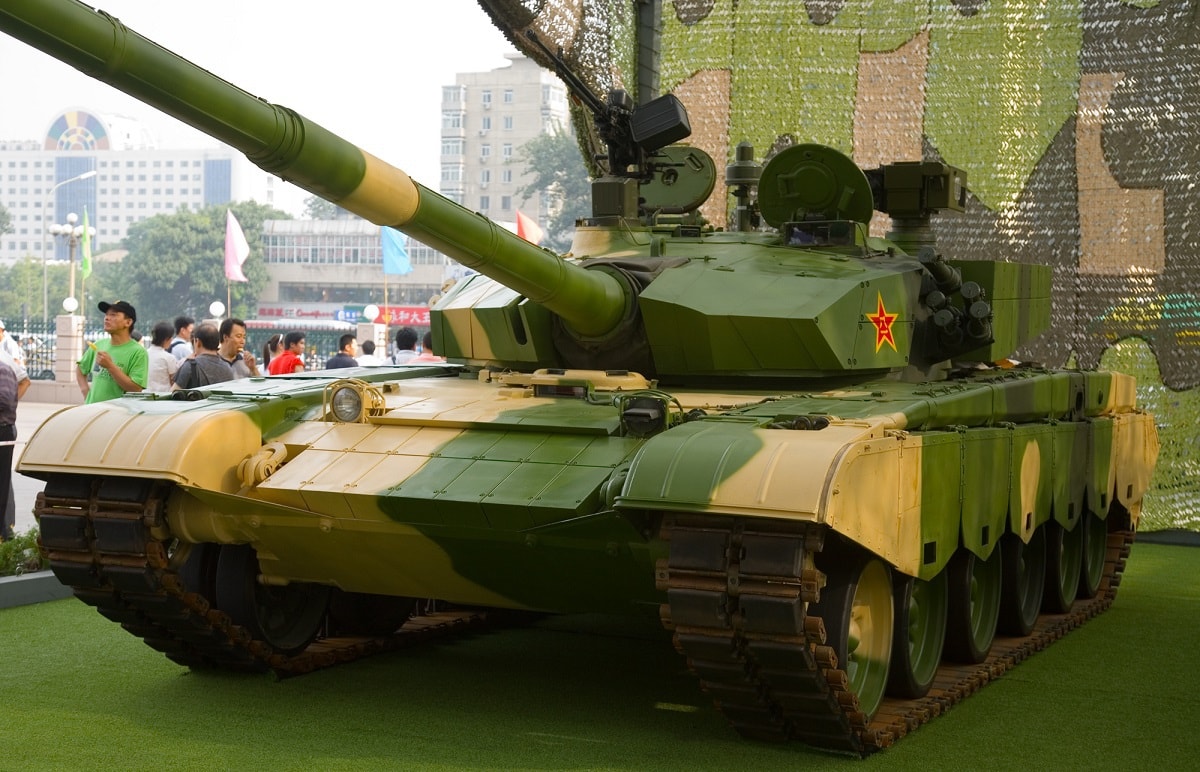In August a Chinese Type 99-A main battle tank (MBT) was spotted on social media. Such a sighting of the Type 99-A wasn’t all that unique, except that the photo was taken in the United States. Normally such a sighting of the tank, which is armed with a 125mm smoothbore cannon that is also capable of firing guided missiles, and has a remote weapon station on the turret that is armed with a heavy machine gun, might be a real reason for concern. In this case, the photo of the third generation MBT, also known as the ZTZ-99, showed it being towed on the back of a trailer was reportedly taken near a U.S. Army base.
That fact only confused some on the social platforms.
No, it wasn’t captured or otherwise acquired – and that’s because unlike some Russian tanks that have been transferred to the U.S. for training purposes, this particular vehicle wasn’t even a real Chinese Type 99-A. According to Defence-Blog, experts suggested that it was a mockup made to resemble the size and silhouette of the real tank to simulate enemy vehicles.
The Dead District (@TheDeadDistrict) shared the photos of the tank on Twitter, and it was fairly easy to see that it wasn’t in fact a real tank. Nor is the United States alone in using such mock-ups of potential adversary’s tanks today. The Dead District had reported that a mock-up of the U.S. Army’s M1 Abrams MBT was spotted last December on a wheeled platform in China – and the tweet also noted that previously a mock-up of the Russian T-90 MBT was also seen in China. Photos of the mocked up Russian-made T-90 circulated back in early 2019, and it is clear that the People’s Liberation Army (PLA) has considered a variety of scenarios on who it might face in a future conflict – and perhaps it isn’t just Russia.
India currently operates more than 2,000 T-90S “Bhishma” tanks, many of which have been deployed on the border with China.
The Role of Aggressor Tanks
The United States military has long employed fake Russian tanks, and these serve a role that isn’t that different from how the United States Air Force maintains “Aggressor” fighter squadrons that are meant to simulate the tactics of potential adversaries.
The U.S. Army 11th Armored Cavalry Regiment (ACR), “Blackhorse Regiment,” serves as an Opposing Force (OPFOR) for the Army and Marine task forces, as well as for foreign military forces that train at the Fort Irwin National Training Center in the Mojave Desert of California. For years, the unit used aging M-551 Sheridan tanks – light tanks designed for paratroopers and scouts – to represent Soviet T -80 tanks and BMP-1 personnel carriers.
In 1998, the Army even rolled out a new Opposing Forces Surrogate Vehicle (OSV), which also served to fill the role of an adversary’s tank or armored vehicle. These were based on the M-113A3 armored personnel carriers (APCs) and were first meant to mimic the BMP-2, while the Army improved upon the design to have them stand-in for T-80 and even T-90 tanks.

Image: Creative Commons.

Image: Creative Commons.
Now it seems the U.S. has continued to enhance the efforts to make the mock-ups more closely resemble tanks that our warfighters could face in a future conflict. However, the U.S. and its allies are certainly not alone in conducting training operations with vehicles that are meant to simulate a potential enemy’s tanks.
Peter Suciu is a Michigan-based writer who has contributed to more than four dozen magazines, newspapers and websites. He regularly writes about military small arms, and is the author of several books on military headgear including A Gallery of Military Headdress, which is available on Amazon.com.

